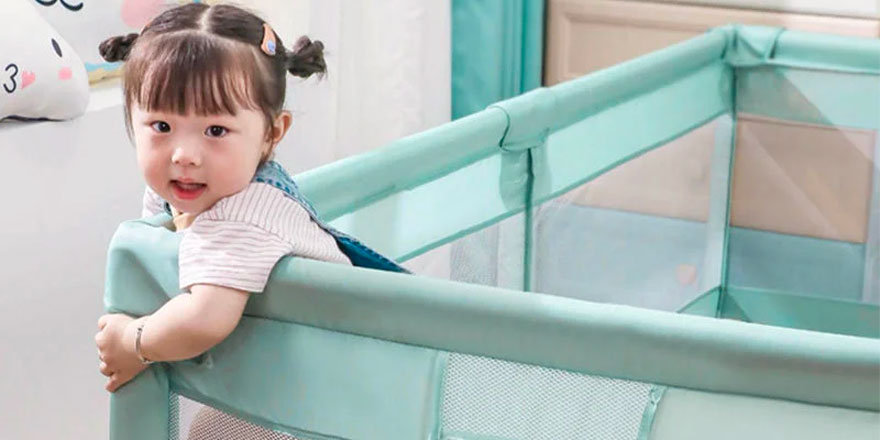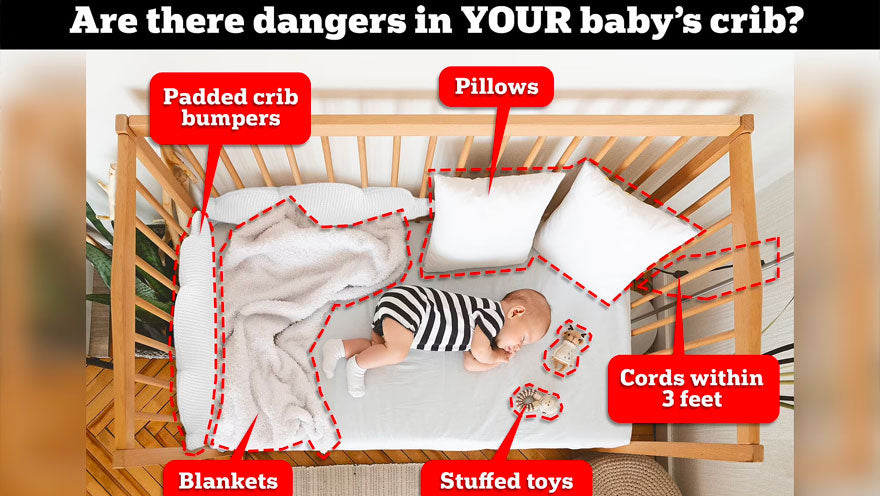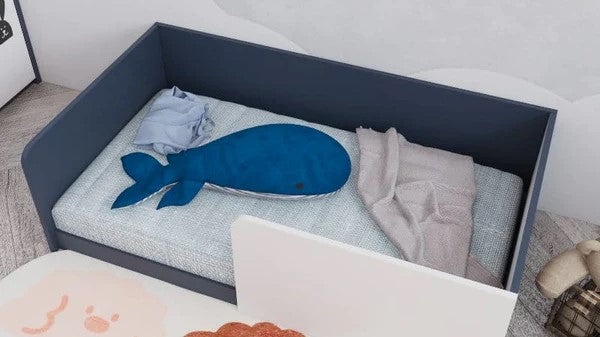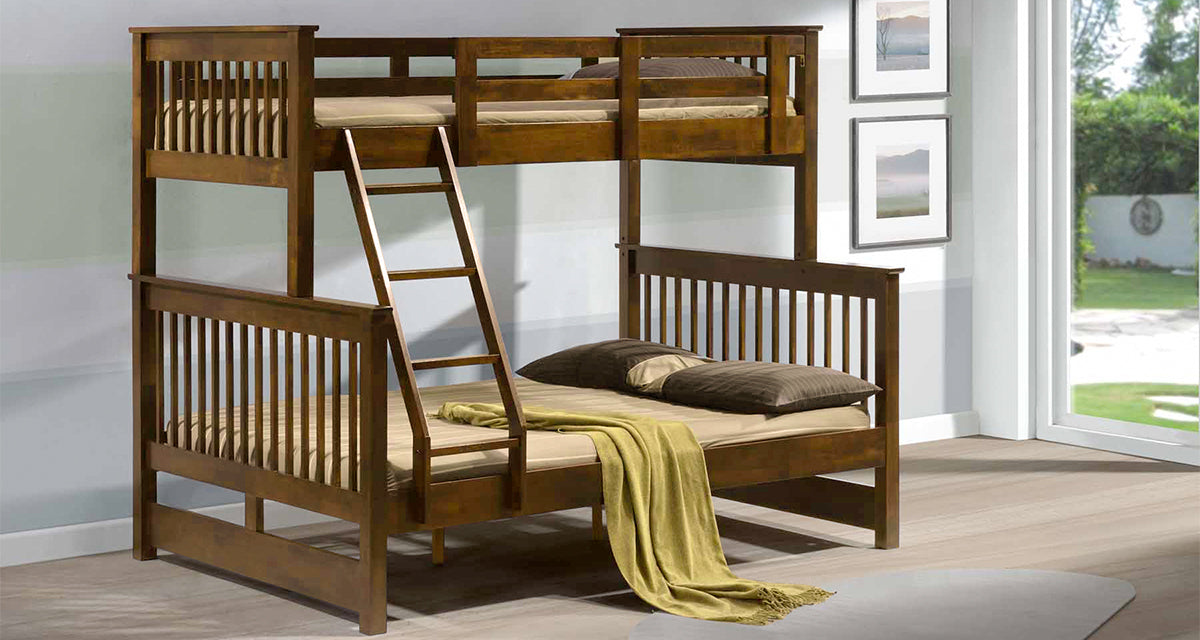When it comes to ensuring the safety, comfort, and well-being of our precious little ones, the choices we make regarding their sleep environment are of paramount importance. While playpens and pack 'n plays serve as versatile tools for daytime activities and short-term confinement, they may not be the best option for overnight slumber. In this article, we delve into ten compelling reasons why babies should not sleep in a playpen or pack 'n play but instead should rest in a proper baby cot. From space constraints to safety considerations, we explore the essential factors that every parent should be aware of when making the crucial decision about their infant's sleep habitat. Let's embark on a journey to prioritize the comfort and security of our beloved babies during their precious moments of rest.
1. Limited Space for Comfort
Playpens, although versatile for playtime and short naps, do not offer the same spaciousness as a proper baby cot. Babies need room to stretch, move, and adjust their sleeping positions during the night. Being confined to a playpen for extended periods can lead to discomfort and restless sleep. Playpens sold in Singapore are usually about 75 x 110cm. This is deeper and shorter than a typical baby cot. They cannot be used when baby is 90cm tall.
2. Lack of Safety Features
Playpens are primarily designed for supervised play and temporary confinement. They may not provide the same level of safety features as a dedicated baby cot. Cribs often have higher side rails to prevent climbing, ensuring the baby's safety, while playpens may have lower sides, making it easier for a curious or active baby to attempt to climb out. Their soft sides are not suitable for younger babies without supervision.
Singapore's Bestselling Baby Cot: Model #892-Mint @ $99/-
3. Inadequate Mattress Support
A crucial aspect of safe and comfortable sleep for babies is a firm, flat mattress. Baby cots are equipped with such mattresses and bases, specifically designed to support a baby's developing spine. Playpens may not offer the same level of mattress support, potentially impacting the baby's sleep posture and comfort.
Playpen bases and sides are usually made of soft and flexible materials. This makes them unsuitable to place high quality mattresses that require a firm platform*. Baby can be slip in and get trapped between the sides a thicker mattresses. Better quality mattresses are usually thicker.
4. Hygiene Concerns
Keeping a sleeping environment clean is essential for a baby's health. Baby cots often have easily cleanable surfaces and fitted sheets that can be changed regularly. Playpens, on the other hand, may have less hygienic surfaces that are not as easy to clean. Increasing the risk of exposure to germs and bacteria. Playpen nettings and fabrics can be a breeding ground for bacteria, fungus, mites, insects and viruses.
5. Lack of Long-Term Durability
Baby cots are constructed with durability and longevity in mind, designed to withstand the rigors of a growing child. Baby cots can last for years and can be handed down to the next sibling. Playpens may not have the same level of construction quality and durability, potentially leading to wear and tear over time. Many baby cots can be converted to toddler beds at a later stage and can be used up to 6 to 8 years old.
6. Potential for Choking Hazards
Some playpens may come with parts or toys attached that can pose a choking hazard if a baby is left unsupervised. These small detachable playpen items could become dislodged and put the baby at risk.
7. Limited Mobility
A baby cot provides a safe and secure sleeping environment, allowing a baby to develop their motor skills and practice rolling over and moving within the confines of the cot. Playpens, with their smaller size, limit a baby's ability to explore and move freely.
8. Sleep Routine Disruption
Creating a consistent sleep routine is essential for a baby's development. Sleeping in different environments, such as a playpen, may disrupt baby's routine, potentially leading to difficulties in settling down and sleeping through the night.
9. Uncomfortable Sleep Positions And Risk of Sudden Infant Death Syndrome (SIDS
In a baby cot, a baby can sleep comfortably on their back on a firm surface. This is the recommended sleeping position to reduce the risk of sudden infant death syndrome (SIDS). Playpens may not provide the same level of comfort and support for this crucial sleeping position. Their base and sides are soft and flexible and can smother baby.
Sleep-related deaths, including Sudden Infant Death Syndrome (SIDS), are a serious concern for infants. Placing a baby in a playpen with soft bedding, toys, or loose bedding can increase the risk of SIDS. Babies should always sleep in a firm, flat crib to reduce this risk.
10. Risk of Overuse
Using a playpen as a long-term sleeping solution can lead to overuse and dependency. Babies should gradually transition to sleeping in their own dedicated cot, promoting independence and healthy sleep habits.
*U.S. Consumer Product Safety Commission (CPSC) Report
Since 1988, CPSC has received reports of baby deaths while in playpens. In almost half of these deaths, soft bedding or improper or extra mattresses were present in the playpen, and the children died of suffocation or SIDS. Over this period, CPSC conducted follow-up investigations on many of these deaths.
These problems included:
Soft Bedding. Soft bedding can be a risk factor for infant suffocation and Sudden Infant Death Syndrome (SIDS). For example, many children died in playpens where soft bedding was present and the cause of death was suffocation or SIDS.
Mattresses/Cushions. In addition, significant number of deaths involved mattresses or cushions. The majority of these children died as a result of either being wedged between mattresses, foam, couch cushions, and other large objects placed in the playpen or being wedged between these items and the side wall of the playpen. In some cases, mattresses were too small for the playpen.
Other Hazards. Other hazards identified included:
- Side rails that collapsed, resulting in children being entrapped in the “V” shape created by the two sections of the rail.
- Protruding rivets or other components, which snagged clothing and strangled the child.
- Large mesh on older playpens, which caught buttons on children’s clothing and resulted in strangulation.
- Broken or damaged playpens, with openings that entrapped infants.
- Mesh pockets created when one side of the playpen was left folded down, creating a suffocation hazard for young children.
Conclusion
In conclusion, while playpens have their utility for play and short-term confinement, they are generally not suitable for overnight sleeping. A proper baby cot offers a safer, more comfortable, and developmentally appropriate sleeping environment for infants. Prioritizing a baby cot ensures that your little one enjoys restful and secure sleep, contributing to their overall well-being and growth.



















